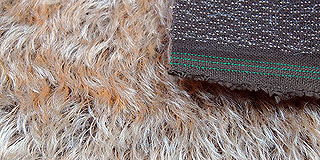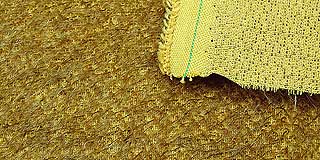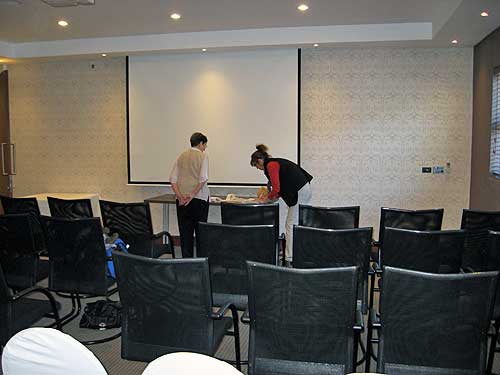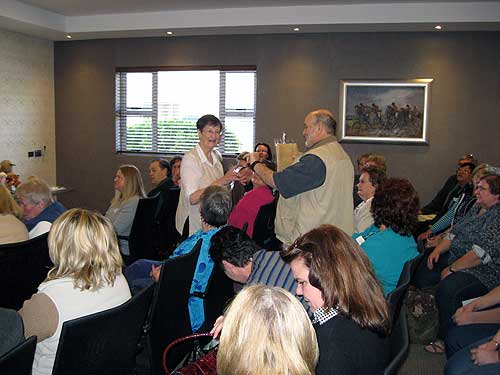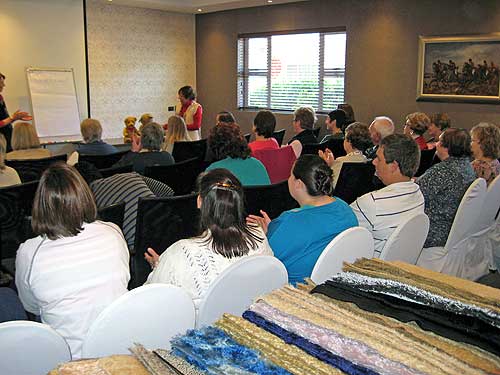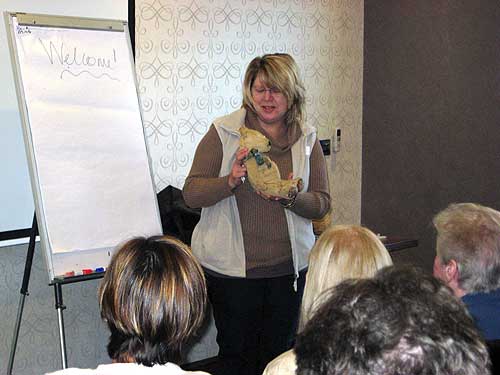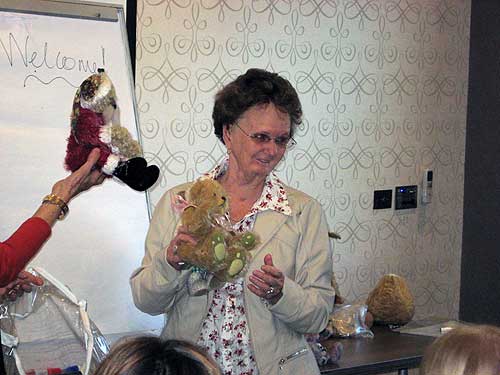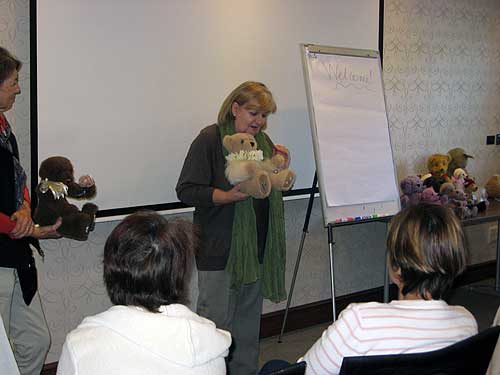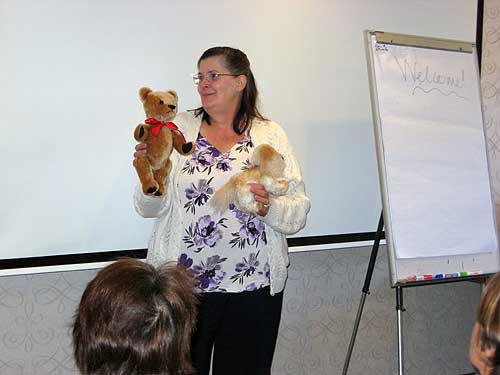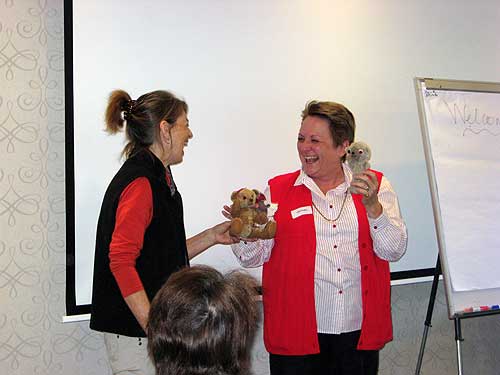Back to Basics, Part 5
 Our Back to Basics column continues and we hope that you're adding some useful
Teddytech tips to your bearmaking repertoire! What we have covered so far...
Our Back to Basics column continues and we hope that you're adding some useful
Teddytech tips to your bearmaking repertoire! What we have covered so far...
- Kit and pattern selection
- Making templates
- Choosing fabrics for your bear
- Transferring the pattern to your fabric
Stitching your Bear
Once again, it's important to read the step by step instructions supplied with your pattern and assemble your sewing supplies so you have everything to hand, i.e. scissors, pins, needles, thread for tacking, thread for sewing (either hand or machine) and a thimble.
Pin, Whip stitch (i.e. tack or baste) first
Pin the shapes, right sides together, as indicated on the instructions (make sure to align the edges and tuck the fur in) and then whip stitch them together in a contrasting coloured thread, removing the pins as you go.
A whip stitch, in this instance, is used as a temporary tacking or basting stitch, keeping the shapes together just until you have hand or machine stitched them securely. The stitches are made over the two raw edges of your shapes that are pinned together, and can be about 6mm apart.
The whip stitching should be just outside the stitching line to facilitate the removal of that thread once you've hand/machine stitched the pieces together.
Remember, that there is a certain sequence of steps you need to follow. For example, if the pattern has paw pads, then they will have to be whip stitched and hand or machine stitched to the inner arm before the outer arm is attached. The legs are stitched before the footpads are inserted etc. etc.
Colour of Thread
Match the colour of the sewing thread to the colour of the mohair backing, and your stitches will blend in perfectly with the fabric!
Which Stitch to use?
If hand stitching, then a back stitch is a good, secure stitch to use, or a double running stitch. Ensure that your stitches are small and pulled taut, holding the fabric pieces together firmly. Frequently check on both sides that your stitching line is within the seam allowance.
If machine stitching, test the tension on a scrap of mohair first to ensure that your stitch is not too loose or too long.
Certain shapes require you to start and end with a back stitch for stability, for example at the base of the head (neck area) where the seams will have to withstand the filling of the head, the jointing, etc. without unravelling.
Once all the shapes have been stitched, remove the whip stitching and carefully brush the fur out of all the seams on the inside of your bear, then do the same on the outside of your bear. Check from the outside that all the seams are securely stitched.
Next time we'll talk about giving your bear some shape —
whether it be a slim, streamlined bod or a well-fed, rounded shape!

